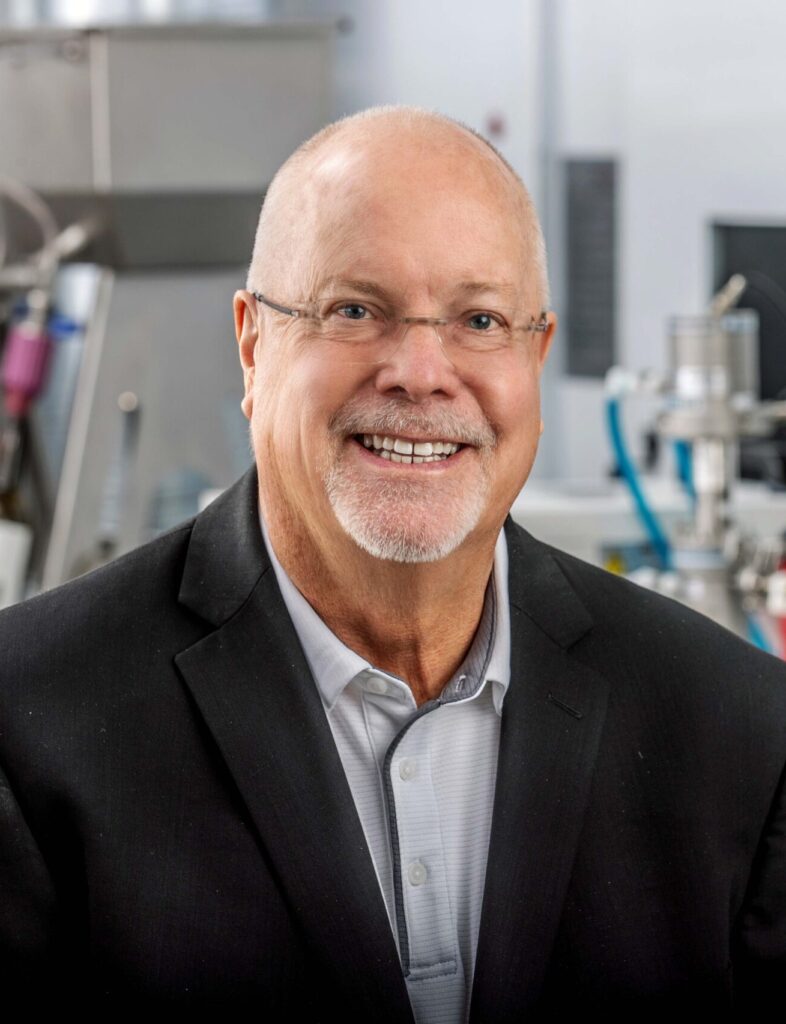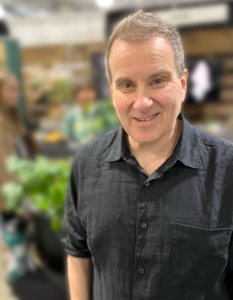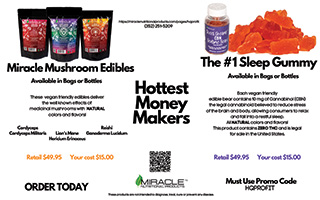How “California Sober” might be the Golden Bridge between alcohol excess and harm-reduced living.
By Eva Berlin Sylvestre
I’m gonna shoot straight: Mama likes the sauce. In good times, I’m reaching for the Grey Goose to celebrate. In bad times, I’m reaching for the Grey Goose to commiserate. Bored? Goose. Anxious? Goose. Goose on TV? Goose.
It’s a problem.
So when the wife—who drinks red wine on occasion and usually with dinner—insisted I try the “Sober October” trend with her, I offered a “Sure, why not?” so cavalierly that she side-eyed me. She knew (like I denied) how hard that was going to be for me—and she was right. As it was mid-September when she proposed the idea, I immediately began the dreaded “taper.” For the uninitiated, going cold turkey if you’re a habitual drinker can be medically dangerous, so you’ll want a gradual cutdown before you dismiss the booze entirely.
But even the taper was treachery. Since this story will live in the bountiful and hazy realm of HeadQuest, let’s imagine it thusly: The nightly routine of packing a nice, full bowl after work has come to an end. In its stead, you’re granted half a pinky nail’s worth of a nug—two feeble little hits, tops—and not even a coke pinky nail. After that shitty commute and typing “as per my last email” six times, all you’re granted at day’s end is just enough herb to make you stare at the instant ash disdainfully and wonder why the hell you agreed to this. Now, imagine the substance you use to unwind is actually addictive.
That was me for the last week of September. I was constantly antsy and craving sugar so badly that I attempted to eat the caramelized parrot turds known as candy corn. I also found myself sighing on the couch, wide awake at 3am with tell-tale quitter’s insomnia, for which the only remedy was to accept my fate and begrudgingly hop in the sack with ‘John Cougar’ Melatonin.
Did I mention it’s a problem?
The first week of Sober October was a bitch. The witching hour would come around and my body would instantly cry out for the Goose-and-La Croix routine. I learned a decent response for this from some basement dwellers on Reddit: “Touch grass.” Turns out, when you do that, you also breathe fresh air and can watch a chipmunk try and eat the scratch-off ticket someone tossed into your yard. Jokes aside, getting out into nature reminds me that I live in magic — I just don’t take the time to see it. I think a lot of us have gone blind to it.
Think about it: Do you remember being small and perfectly happy to sit in the dirt and play with toy cars, or have parties with your stuffed animals because they were (in your wonderfully imaginative mind) very much real? We lose that as we get older, trading Tonka trucks for tax bills, stuffed animal banter for bitching about inflation. I theorize that most of us are attempting to recreate that magic as we disappear into a bottle of booze or (in other cases) a bottle of opioids.
Someone who knows the latter struggle well is Dr. Peter Grinspoon, a primary care physician, instructor of medicine at Harvard Medical School, and cannabis specialist at Massachusetts General Hospital who found himself in the throes of opioid addiction.
“I was working as a primary care doctor at a prestigious Harvard clinic [and] had been successful in hiding my severe addiction to prescription opioids for a decade,” he recalls. He finagled the scripts on his own, having written bogus prescriptions that ultimately went into his pocket. “In February of 2005, the state police and the DEA raided my office, and filed felony drug charges against me in response,” he says. “This set off a phenomenally painful cascade of punitive interactions with all of the establishments which oversee my medical career—not to mention dealing with the criminal charges themselves.” Thankfully, his misfortune righted itself: “A decade later I was invited to work for the Massachusetts Medical Society to help other physicians who were struggling as I had been.”
The second week of Sober October, still with the tight shoulders and teeth-grinding that a full workload can imbue, Dr. Grinspoon’s words rushed to the fore. Armed with a few chapters of his book “Seeing Through The Smoke,” I decided to try a form of “touching grass” that had a little more pizzazz. I’ve heard about going “California sober,” in which your only source of “headchange” comes from cannabis, so I thought, “Why the hell not?” A few weeks prior, I’d procured a little something from HempBevCo—Cannabis Mocktail Creator—which is liquid THC derived from legal USA hemp. A QR code on the back gave me 10 mocktail suggestions from coladas to cosmopolitans. I went with the Mai Tai.

I spent a lot of time, money, and effort perfecting the product to make sure its effect unfolded in a way similar to that of alcohol.
William Gibbs, HempBevCo CEO
Though the label says fast acting, I didn’t feel a thing the first 30 minutes. I was tempted to try another drink, but after another half an hour, I was well into Disney+’s brand-new Goosebumps reboot (shut up) and was having a tough time paying attention over my inner dialogue: “This show is waaaaaaay good. The writing is superb. I wish I wrote this. Way to go, whoever wrote this. You’re friggin’ awesome. I gotta share your work.” I went to take a pic of the screen to get my friends to watch it, but the camera was set to front-facing. I got a good look at my mug and the chick smirking back looked zooted to the hilt, complete with a soft, goofy grin, tell-tale lowered eyelids, and an “Everything’s mad chill at the moment” aura. Yeah. The mocktail does the trick; cravings absolutely yeeted. It was time to talk to the Creator’s creator.
William Gibbs, the founder of HempBevCo, relayed his reasons for the product’s inception, revealing that he, too, loves alcohol, “But I’ve found I just can’t consume it like I used to because it’s so hard on my body.” One of the standout features of his creation is its ability to provide a sensation not entirely dissimilar to alcohol. Gibbs says, “I spent a lot of time, money, and effort perfecting the product to make sure its effect unfolded in a way similar to that of alcohol.”
While the market for cannabis-based products is vast, his company primarily targets the alcohol consumer, emphasizing the importance of educating consumers on their perfect dose. “The big market for a product like this is not the cannabis consumer, but the alcohol consumer.” When I mistakenly called his product a tincture, Gibbs politely clarified that the Mocktail Creator is not a tincture. “The problem with a tincture is that it’s not water-soluble, and when put in a drink mostly made of water, it usually floats to the top or sticks to the sides of the glass,” he says. “In general, you’re not going to get an even distribution.”
To right the wrong, HempBevCo uses “a nano-emulsification process that not only makes it water-soluble, but also shrinks the size of the oil droplets down to about the size of 40 nanometers,” Gibbs elaborates, pointing out its superior bioavailability compared to traditional tinctures. I guess that’s why it hit nice and smooth that night.
A week prior, I went in halfsies on the concoction with Eliza, who was embarking upon Sober October as well. She opened up to using alcohol and cannabis for relaxation. “It’s a decompression ritual,” she said, noting that cannabis elevates her senses, making even mundane experiences enjoyable.
Eliza recalled her less-than-pleasant encounters with Delta 8 gummies, the only OTC cannabis offering her state will allow. “The first time was ambiguous because I mixed it with alcohol,” she said. “The second time was a complete misfire, leading to paranoia and nausea.”
In contrast, she spoke positively about her experience with the Mocktail Creator, which actually contains “the good stuff.” Most likely because of her super-fit frame, it hit fast. “It [took] about 30 minutes to feel the effects, but then, the change was substantial,” she said. While the beverage did cause her some anxiety, its impact on her booze craving was significant. “I didn’t think about alcohol,” she said.
Eliza’s experience underscores that she, like many, is navigating an evolving landscape of alcohol substitutes. “It’s always been alcohol at family events,” she said, “but there’s room to explore and find balance.”
So, “California sober” aside, are you really off substances if you’re high on THC? It’s still a mind-altering substance, but so is coffee, right? That’s something else Dr. Grinspoon touches on: the hypocrisy of how we categorize some substances as illicit, and normalize some of the most addictive ones. I venture to say that many people, given the opportunity, would have more of a fighting chance at kicking fatalistic habits if they could walk into a recreational marijuana dispensary instead of a bottle shop or the office of a local pill-pusher to unwind and/or come off the hard stuff. (Are you listening, federal gov?)
I ask Dr. Grinspoon about the neuroscience of addiction and where it lives in the brain. Could it maliciously blanket our prefrontal cortex—responsible for reasoning—and commandeer the wrinkle-ship to prioritize getting high above all else? Is it shushing the amygdala, which we use to sense danger, and lead us to places the sane avoid? Dr. Grinspoon says it’s “complicated, with many theories” but it often comes down to our “reward center and how much dopamine is released” when we get up to our mischievous bullshit.
“Drugs of misuse can ‘hijack’ [our reward center] by flooding our brains with neurochemicals that make us feel good,” he says. Healthy, normal brains get those kinds of neurochemicals from the legitimately good stuff: sex, working out, meditating, performing good deeds for others, hanging with people we adore, being out in the sunshine. To the addict, those are boring wastes of time and effort when we’ve got a couple Oxycontins, or say, a handle of bourbon to fire up the feel-goods. We’ve found the shortcut, you lame nerds, so have fun with your goofy little bicycle ride around the lake.
It’s a sad existence, even if we pretend like this is what we’re choosing. “I can quit anytime I want—I just don’t want to,” is perhaps the biggest lie we tell ourselves, and that monkey on our back feeds us what we think are convincing lies.

Cannabis, in my opinion, is unsurpassed for opioid withdrawal symptoms, and it treats many of the underlying conditions that were fueling the addiction such as insomnia, anxiety, and pain.
Dr. Peter Grinspoon
“My back hurts, doc. I really need those Percocet.”
“I’ve only had one drink, officer. Okay, three, but that was over a 49-hour period!”
“I have a high stress job and Xanax bars help me focus. Do you want my children to starve, doc?!”
But the charade, if we’re lucky, gets really tiresome.
So what’s an addict to do when they’re sick of the “I’m fine!” facade and all the negative consequences that chase us around? Alcoholics Anonymous, please hold your tongue, but now 17 years in recovery, Dr. Grinspoon has a lot to say on the efficacy of cannabis to mitigate the unrelenting havoc that coming off drugs can wreak.
“Cannabis, in my opinion, is unsurpassed for opioid withdrawal symptoms, and it treats many of the underlying conditions that were fueling the addiction such as insomnia, anxiety, and pain,” Dr. Grinspoon says.
Apart from knowing how effective cannabis can be when it comes to kicking opioids, the storied doc has a deeply, more personal connection to its medical benefits. His younger brother Danny was a pioneering medical cannabis patient while battling childhood leukemia in the early 1970s. Dr. Grinspoon recalls, “Cannabis vastly alleviated the ravages that he was undergoing from the chemotherapy [and] enabled him to maintain his weight and to actually play with his little brothers.” His parents took a significant risk by illegally purchasing cannabis for Danny, putting their careers on the line to alleviate their son’s suffering. Dr. Grinspoon emphasizes, “There’s nothing more impactful than witnessing firsthand the alleviation of suffering in a family member.” This formative experience deeply influenced his career and advocacy for cannabis as a medical treatment.
I ask him if he can speak to how we’re made for cannabis, as our brains house an uptake region specifically and expressly for cannabis, referred to as the endocannabinoid system. Dr. Grinspoon clarifies: “It’s more like cannabis is designed for us! It bootstraps on to our endocannabinoid system (ECS). Further, “All animals have an ECS—it’s 500 million years old. Humans have been using cannabis for 5,000-10,000 years.” On the topic of smoking versus ingesting marijuana, he notes, “Yes, when you eat it, your liver changes delta 9 THC to delta 11 THC which people can find to be stronger and ‘spacier,’ but, it can give you longer relief from pain than smoking can,” he says. He also addresses misconceptions about addiction, stating, “We need to meet people where they are and not judge,” and suggests being “open to the use of Suboxone, cannabis and psychedelics.” He stresses, “This is not ‘substituting one addiction for another,’” as is an idea parroted in certain recovery forums and programs, but is rather “harm reduction and will save lives,” he says.
At the time of my formerly Sober October (and now California Sober October), I feel physically fantastic. I’ve lost bellyfat, I wake so rested and bereft of the strange back, neck, and hip stiffness that I feel like I’ve been doing yoga for a few weeks, and I find more time in the day to whatever-the-hell I want (okay, sleep and eat parrot turds). But I can’t dishonor you with an untruth, HeadQuesters; There’s still an itch that darkens my door during the witching hour. I hope against the rationale of statistics that it’ll leave me sooner than later, but in the meantime, I gotta keep trucking.Tonight, I’m gonna hunker down and stave off the Goose-and-La Croix ritual with some TV. I need to finish the remaining four episodes of the new Goosebumps, anyway.
Wait. Goose … bumps?
Goose on TV?
Son of a mother!
At the time of submission, Berlin hasn’t had another drink, despite finishing the Goosebumps reboot. #shade












